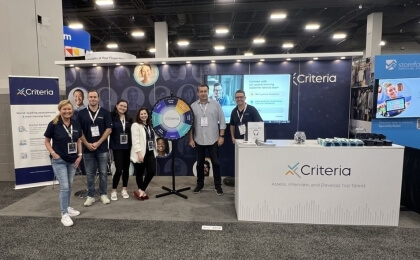Sometimes it can feel like technology pervades every part of our waking lives. From the time we get up in the morning to the time we go to bed, our eyes are glued to a screen, bouncing from one device to another. However, access to technology and the internet isn’t a given. In fact, there’s a wide difference in access that is often linked to a person’s education, income, or other socioeconomic factors.
The Digital Divide – Defined
This difference is what’s known as the digital divide. The digital divide is the gap in access and usage of internet and computers that disproportionately affects certain groups. And it can have wide-reaching effects on the economic and social opportunities that people are afforded. While those of us who are immersed in the business world may think that the digital divide must be eroding, numerous reports confirm just how persistent it is. For example:
- A quarter of the nation still does not have access to broadband
- 10% of Americans don’t use the internet
- 46% of lower income Americans do not own a desktop or laptop computer
- 26% of lower income Americans rely on their smartphones for accessing the internet
This fourth statistic brings up an interesting point. While a high proportion of lower-income Americans still do not own a desktop or laptop, more people are able to access the internet through a smartphone. However, reliance on a mobile device may make it harder to engage in activities that are optimized for a desktop or laptop.
How the Digital Divide Impacts the Hiring Process
When it comes to the job application process, these differences in internet access and device usage have even bigger implications. Think of all the steps an applicant could be asked to do throughout the hiring process. They may be asked to:
- Fill out an application with multiple fields and pages
- Upload documents, such as a resume, certification, or sample of work
- Take a pre-employment assessment
- Participate in a video interview
- Submit to a background check
- Provide references
All of these activities are technically doable on most smartphone devices, but they are often more cumbersome than on a traditional computer. Inconsistent internet access can complicate the process even further, cutting off the applicant midway through the process and sometimes forcing them to start all over again.
One takeaway? A hiring process that is not optimized for a variety of devices, including mobile, will unintentionally make it harder for some people to apply. Many times, this difference falls along the line of the digital divide. And unfortunately, the groups that are most affected by the digital divide often include individuals who are Black or Hispanic, are older or disabled, live in rural areas, or have lower income and educational attainment.
When so many organizations are actively working to improve the diversity of their workforces, it becomes even more important to try to minimize the impact of the digital divide.
Optimize Your Hiring Process to Bridge the Digital Divide
The goal for any hiring process is to select the best person for the job. This is easier said than done. So many factors can influence the final decision about who to hire. However, your decision is constrained at the very start because you can only select from the pool of applicants who end up applying to the job.
In an ideal world, access to technology should not be limiting the number of applicants that reach you. But because of the digital divide, this is a reality that every talent professional must accept.
There are best practices that can make it easier for applicants from all backgrounds to successfully complete your application process. The first, most obvious step is to optimize your entire process for not only mobile devices but ideally all device types. After all, 65% of people use mobile devices to search for jobs, and 78% would apply to more jobs on their mobile devices if it was easier to do so.
It helps to go through your hiring process yourself to see where they may be unnecessary technology-based roadblocks that might be preventing an otherwise great candidate from applying. This process can simultaneously help you find opportunities to improve your candidate experience overall.
In addition, you’ll also want to monitor the number of steps that someone has to take in the application process. A candidate’s willingness to engage in 5-10 steps on a desktop might change if they are using a mobile device.
You can also consider the order of the steps in your hiring process. Moving certain steps later in the process might help you minimize some of the initial friction.
And when it comes to assessments, we recommend using a solution that makes it easy for candidates to complete the assessments on a mobile device. Whether it’s game-based or a typical assessment, the candidate should be able to successfully complete the assessments without fearing that they can’t succeed on a mobile device. Exceptions obviously exist, for example, if you’re administering a typing test. Nevertheless, the goal is to make the process as seamless as possible for every member of your applicant pool.
The digital divide should never be the reason that you overlook the right candidate. The goal is to minimize any noise caused by the digital divide so that you can identify someone’s true potential.




